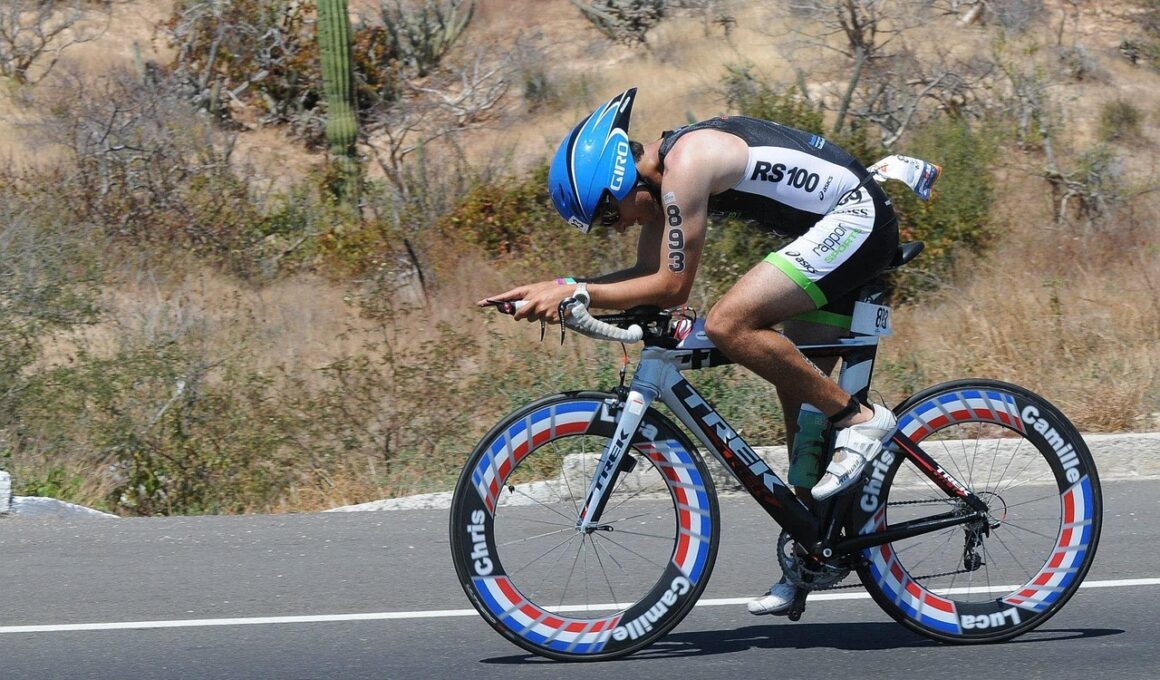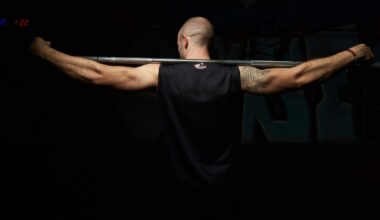Evaluating and Improving Your Bike Fit with Your Triathlon Coach
When it comes to triathlon training, having the right bike fit is crucial for both performance and comfort. Many athletes overlook the importance of bike fitting, often suffering from discomfort or inefficiency while riding. A proper bike fit ensures that your body is positioned correctly to optimize power output and minimize fatigue. Working closely with your triathlon coach can help you assess your current bike fit and identify areas for improvement. Your coach will analyze your body measurements, flexibility, and riding style to tailor adjustments to your specific needs. In addition, they can provide you with insights into proper bicycle geometry that can enhance your riding experience. This alignment not only contributes to improved overall performance but also decreases the likelihood of injury. Your coach can suggest specific exercises to help you increase flexibility and strength in key areas. Regular evaluations of your bike fit during training sessions are essential to adapt to your ongoing development as an athlete. Consistent communication with your coach about any discomfort experienced during rides also contributes to successful adjustments.
After you’ve established communication with your triathlon coach about your bike fit, it is crucial to conduct periodic assessments. This will ensure that adjustments made are effective and beneficial for your overall training. During the evaluation process, your coach might use video analysis to scrutinize your riding posture, pedal stroke, and maneuvering patterns. These details will reveal performance inefficiencies, which can then be addressed through targeted adjustments. Additionally, attending bike fitting sessions with a qualified professional can provide substantial advantages. Such specialists often use advanced tools and technology to configure your bike to your unique body type. This could include measuring your hip height, shoulder width, and even saddle position to achieve the ideal fit. Another helpful aspect is testing different saddles and handlebars to find what provides the most comfort during long rides. In tandem with your coach, ensure that your bike is equipped with the proper gear and components suited for your biking needs. These evaluations will empower you to concentrate on your technique and physical capabilities rather than struggle with discomfort, allowing for a more productive and enjoyable training experience.
Understanding Key Components of Bike Fit
For an athlete focused on improving their bike fit, understanding the essential components is necessary. Key aspects such as saddle height, saddle position, and handlebar height significantly impact your performance. The saddle height directly affects your pedaling efficiency, and adjusting it properly can prevent injuries. For instance, if it’s too high, it might lead to knee pain; if it’s too low, it can cause discomfort and hinder power transfer. The fore-aft position of the saddle is equally vital, as it ensures you remain balanced on the bike. The handlebar height adjusts your riding posture, influencing comfort levels during long rides. A higher handlebar height can relieve pressure on your back and neck but could limit aerodynamics. On the other hand, lower handlebars may favor speed but can create strain. Assessing your bike fit in tandem with your triathlon coach will help in optimizing these aspects for better performance. Regularly testing small adjustments can lead to significant enhancements in your riding experience. Discussing with your coach which modifications worked best for you will further refine the process.
Beyond mechanics, understanding your body and its interaction with the bike is essential for improving fit. Each cyclist’s physique is different, influencing their optimal bike setup. Discuss any physical limitations or issues you’ve faced previously with your coach, as this will help tailor the fit specifically for you. Trying out different bikes can also provide insights into the most comfortable fit; many shops offer test rides to allow you to experience various geometries and components. Exploring various crank lengths or pedal systems can make a noticeable difference. Using proper cycling shoes and ensuring they are compatible with your pedal system is another important consideration. This means your feet have sufficient support and power transfer capabilities, allowing for efficient cycling. Additionally, being mindful of your riding position throughout your training can create a direct impact on how you feel while racing. Regular check-ins with your coach ensure your bike fit evolves along with your training. Paying attention to these components can significantly enhance your comfort level and performance on race day.
The Importance of Regular Assessments
Conducting regular assessments of your bike fit is just as critical as the initial fitting process. As your body changes due to training, factors like muscle development and flexibility can alter your optimal bike fit. Engaging consistently with your triathlon coach helps to address these changes, ensuring your bike remains aligned with your growing capabilities. Annual or even semi-annual bike fit assessments may help maintain and enhance performance levels in triathlons. Moreover, periodic evaluations keep you aware of any bad habits that may creep in during training. It’s also common for triathletes to gain or lose weight, which can drastically affect fit. An essential part of the assessment process includes discussing your riding experiences and any discomfort experienced. These discussions should be comfortably candid with your coach to identify areas that still require attention. Utilizing technology for performance tracking and analysis can also offer invaluable data. Ultimately, these consistent evaluations supplement the insights gained from your everyday training, making your improvements sustained and long-lasting. Regular interactions with your coach keep your training fresh while also helping refine your overall racing strategy.
Exploring the world of cycling dynamics may lead to an entire shift in performance potential. Your triathlon coach can help you understand the balance between power, comfort, and speed through fine-tuning your bike fit. Investing in your bike setup often yields substantial returns in race performance. Imagine effortlessly transitioning from cycling to running during races; this begins with a well-executed bike fit. Moreover, the psychological benefits of a well-fitted bike cannot be understated. Riding comfortably allows you to concentrate on strategies and pacing rather than worrying about aches or strains. By working closely with your triathlon coach, you can create a positive feedback loop during your bike sessions. As you grow as an athlete, becoming more adept at identifying how changes affect your performance becomes easier. This cycle of knowledge will empower you to communicate effectively with your coach regarding your evolving needs. Ensure that you embrace the process; getting the right bike fit takes time, persistence, and a willingness to adapt. Celebrate small wins along the way as they contribute to overall growth in your triathlon journey.
Conclusion: Your Journey to a Better Bike Fit
Evaluating and improving your bike fit is an essential aspect of successful triathlon training. The journey involves careful consideration of various elements, consistent communication with your coach, and a commitment to self-improvement. By prioritizing your bike fit, you not only reduce the risk of injury but also enhance your performance. Engaging in regular assessments and communicating openly with your coach will ensure that you stay ahead of any potential discomfort or inefficiency. Utilizing feedback from training sessions helps in fine-tuning the adjustments to your setup. The benefits of undergoing a professional bike fitting cannot be overstated, as it can lead to an optimized riding experience tailored to your individual needs. As you gain more experience as an athlete, your ability to adjust your bike fit will also grow. Take the time to reflect on the lessons learned and how they can inform future adjustments or evaluations. Ultimately, your dedication to improving your bike fit will pay off, not just on race day, but throughout your entire triathlon training journey.


